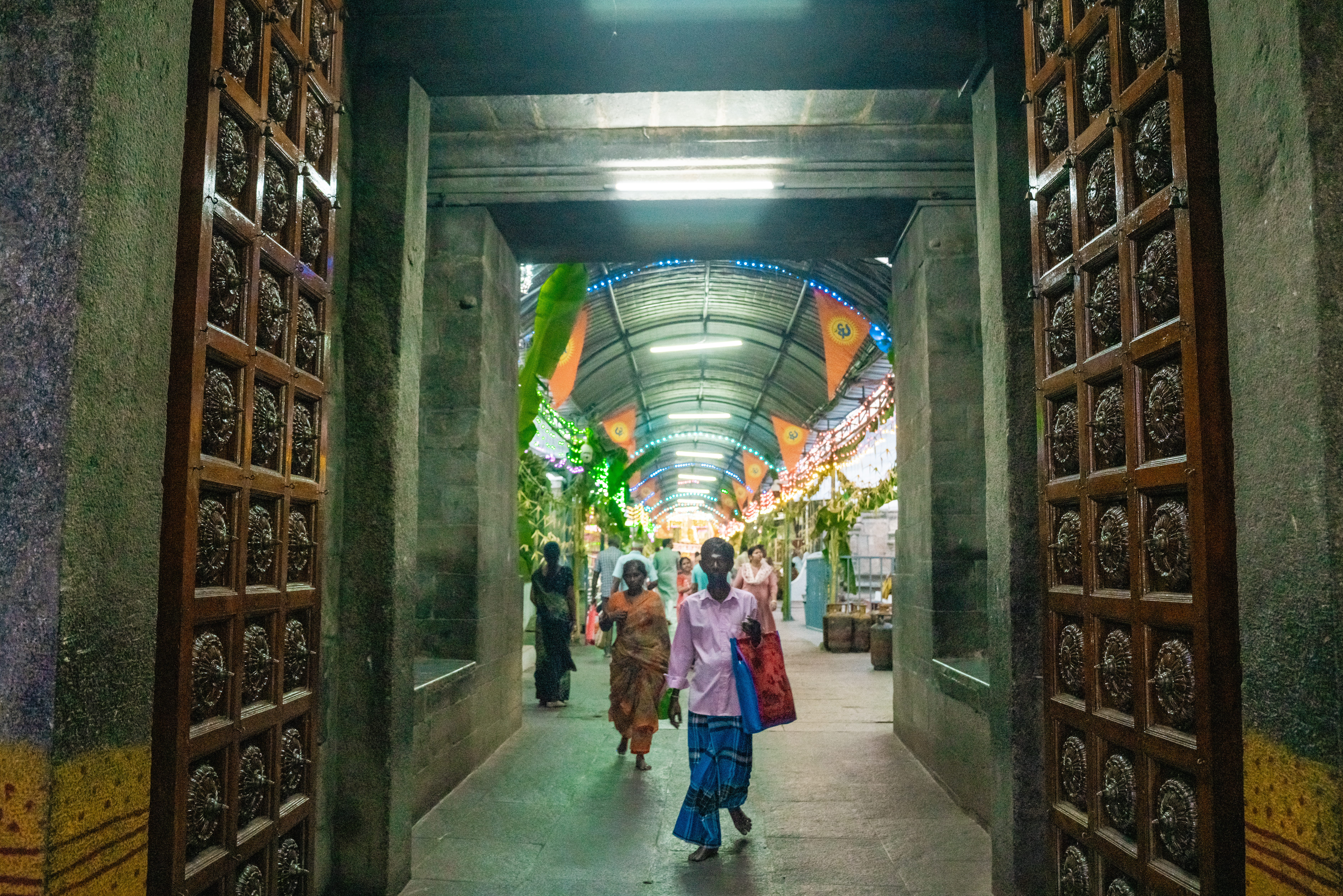History: Sri Kalahasti Temple, known as the "Kailas of the South," has a rich history dating back to the 10th century CE during the Chola dynasty. It is situated adjacent to the Swarnamukhi River and flanked by natural hills like Durgambika, Kannappar, and Kumaraswamy. The temple's name originates from the legends of a spider (Sri), serpent (Kala), and elephant (Hasti), all revered for their devout worship of Lord Shiva. Over the centuries, it has been enhanced by successive Chola rulers and the Vijayanagara emperors, culminating in the construction of a monumental gopuram by Sri Krishnadevaraya in 1516 CE. Lore: According to mythological lore, the spider inside the sanctum sanctorum of Sri Kalahasti Temple, intricately wove temples and images of Shiva. When its offerings were accidentally consumed by altar fire, the spider attempted to swallow the flames, impressing Shiva with its devotion. Similarly, a cobra brought rare gems from Nagaland as offerings, symbolizing the spiritual power of the Self. An elephant purified the altar with water and adorned it with leaves, inadvertently disrupting the cobra's offerings, leading to a fatal conflict. Moved by their sacrifices, Shiva granted both liberation and integrated their spirits into his divine presence, immortalizing their devotion at the temple through symbolic carvings. Architecture: The architectural brilliance of Sri Kalahasti Temple is evident in its intricate carvings and monumental structures. The main entrance is adorned with a towering gopuram standing 36.5 meters (120 feet) high, built by Sri Krishnadevaraya. Within the temple complex, an outer prakaram houses an underground shrine dedicated to Ganapati, while the innermost prakaram enshrines Lord Shiva and Parvati. The temple's irregular plan follows the natural contour of the adjacent hill, integrating harmoniously with its surroundings. Symbolically, the temple's west-facing orientation and its alignment with surrounding hills evoke spiritual connections, while the northward flowing Swarnamukhi River symbolizes the sacred essence akin to the Ganges. In essence, Sri Kalahasti Temple stands as a testament to India's ancient spiritual traditions, blending history, mythological lore, and architectural grandeur to inspire devotees and visitors alike with its divine presence.
|
To be updated

